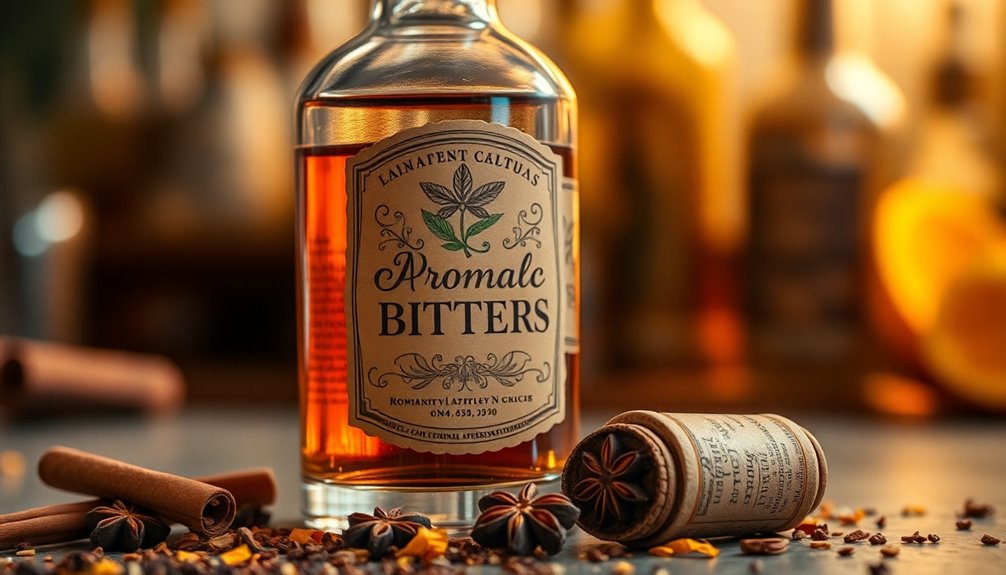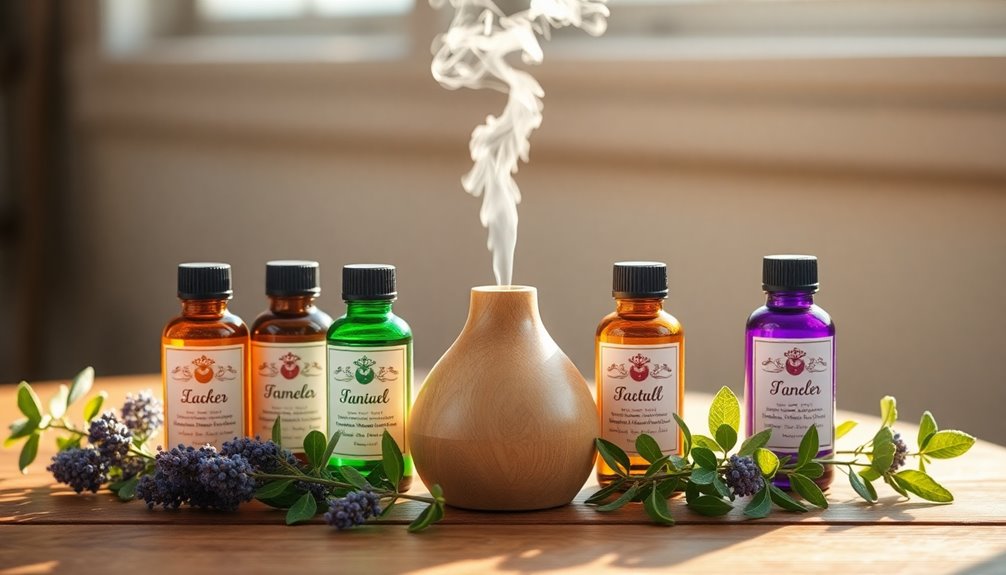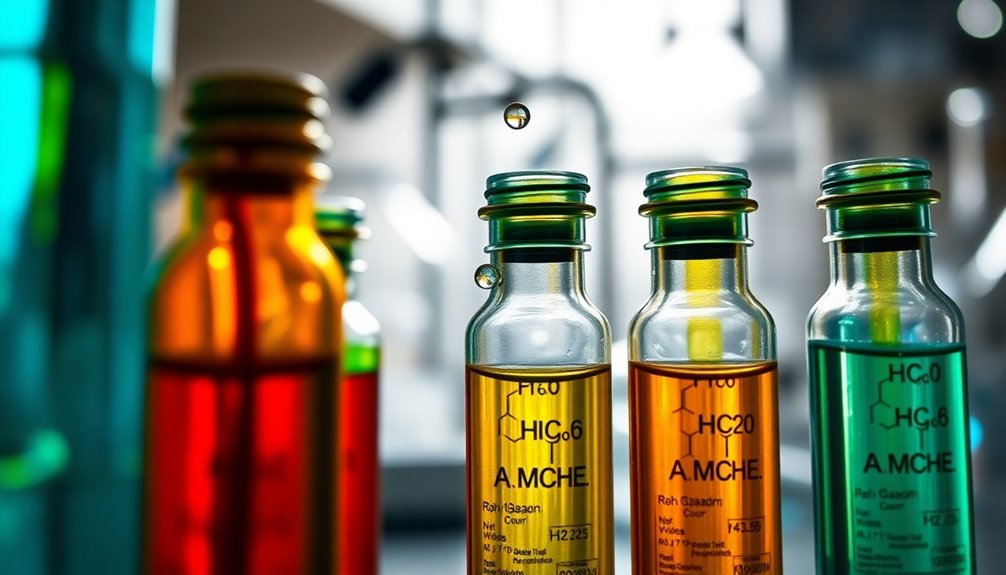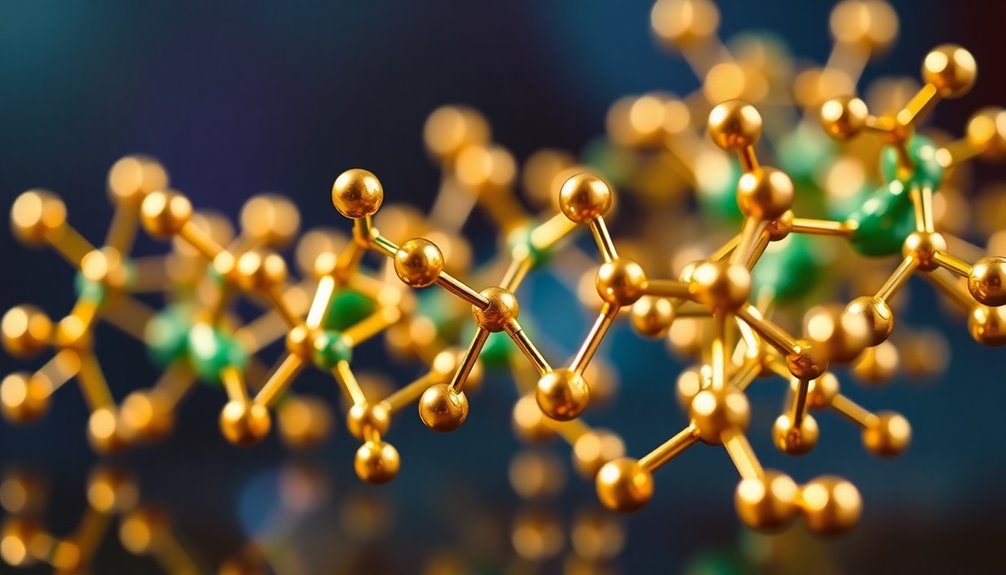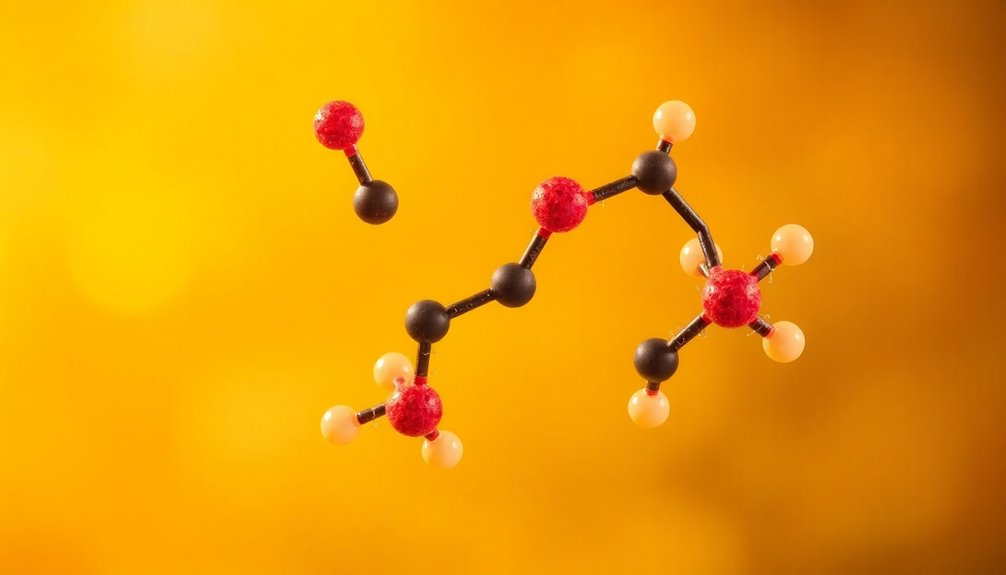Aromatic bitters are concentrated infusions of herbs, spices, and botanicals that enhance the flavor of cocktails. You'll often find them in classic drinks like Old Fashioneds and Manhattans, where just a few dashes can balance sweetness and acidity. Historically, bitters were used as medicinal remedies but evolved into essential cocktail ingredients over time. They offer complex flavors with ingredients like ginger, cinnamon, and dried fruits. You can experiment with various brands to find your favorite. With their versatility and history, there's much more to discover about these intriguing concoctions.
Key Takeaways
- Aromatic bitters are concentrated infusions of herbs, spices, and botanicals used to enhance the flavor of cocktails.
- They originated in the early 1800s as medicinal remedies and later became key cocktail ingredients.
- Commonly used in classic cocktails like Old Fashioneds and Manhattans, they are added in small amounts (4-6 dashes).
- The flavor profile includes ingredients like gentian, dried fruits, and baking spices, providing depth and complexity.
- Aromatic bitters have an indefinite shelf life due to their high alcohol content and should be stored in a cool, dark place.
Definition and Characteristics
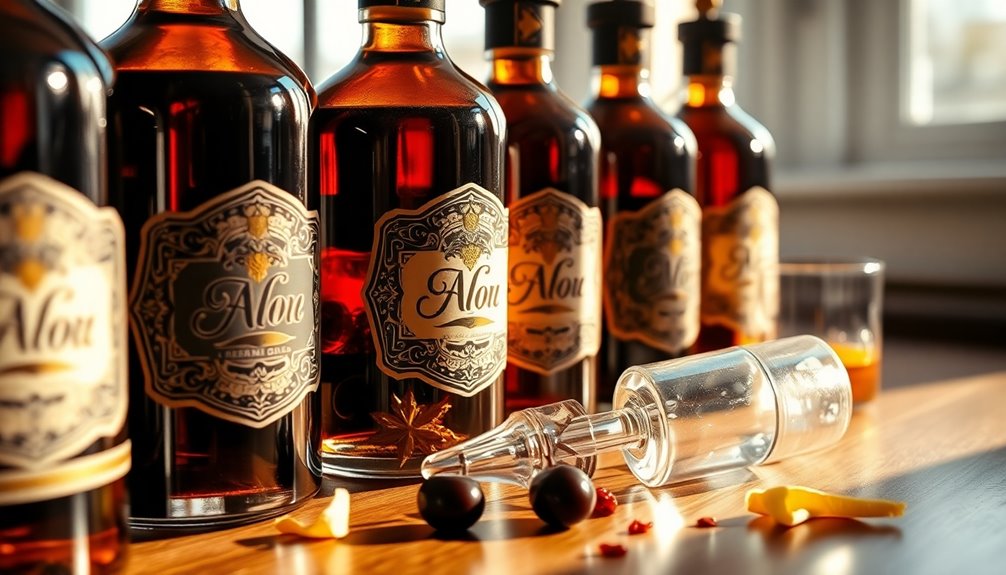
Aromatic bitters are a unique and concentrated infusion crafted from a blend of herbs, spices, and botanicals that elevate the flavor of your cocktails.
These bitters, like Angostura, add complex notes of baking spices, cherries, and nuts, enhancing your drink's depth. You'll often find them in classic cocktails such as Old Fashioneds and Manhattans, where just 4-6 dashes can balance sweet and sour elements beautifully.
Think of aromatic bitters as the salt and pepper of mixology; they fine-tune the overall taste, making your cocktails more enjoyable.
With their distinct brown bottles, brands like Angostura are easy to spot, ensuring you have the right ingredients to take your cocktail game to the next level.
Key Ingredients
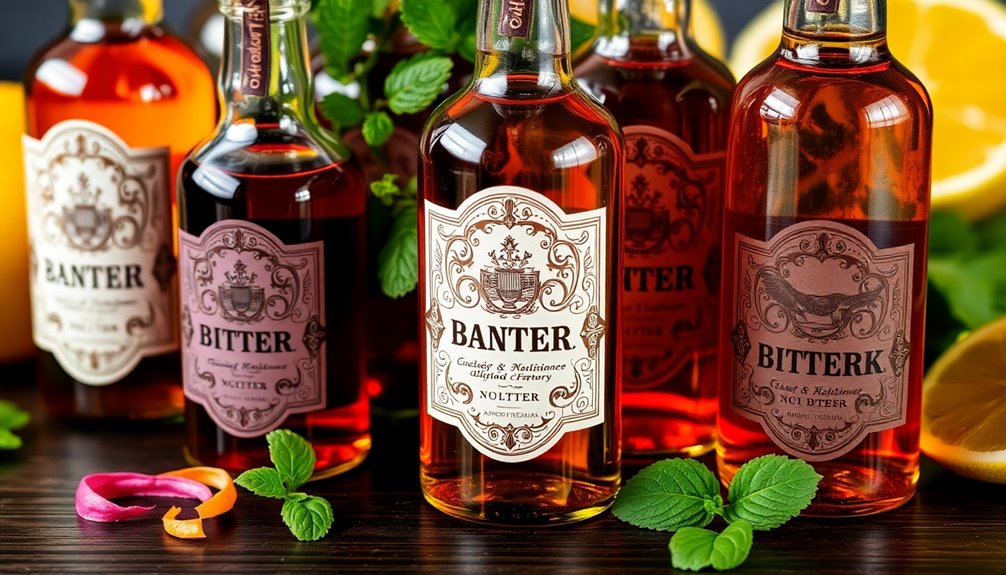
The flavor profile of aromatic bitters hinges on a carefully selected mix of key ingredients. You'll often find dried Bing cherries, fresh ginger, and warm baking spices like cinnamon and nutmeg in these concoctions.
Traditional components such as gentian, quassia, and wild cherry bark contribute to the bitters' complex flavor profile, creating a unique taste experience. Non-traditional ingredients, like grains of paradise, can also add depth and complexity.
Each ingredient serves not just to enhance flavor but also carries perceived medicinal benefits, harkening back to their historical use. These bitters act as a versatile "spice rack" for cocktails, allowing you to elevate and balance the overall taste of your drinks, making them an essential tool for any mixologist.
Historical Context
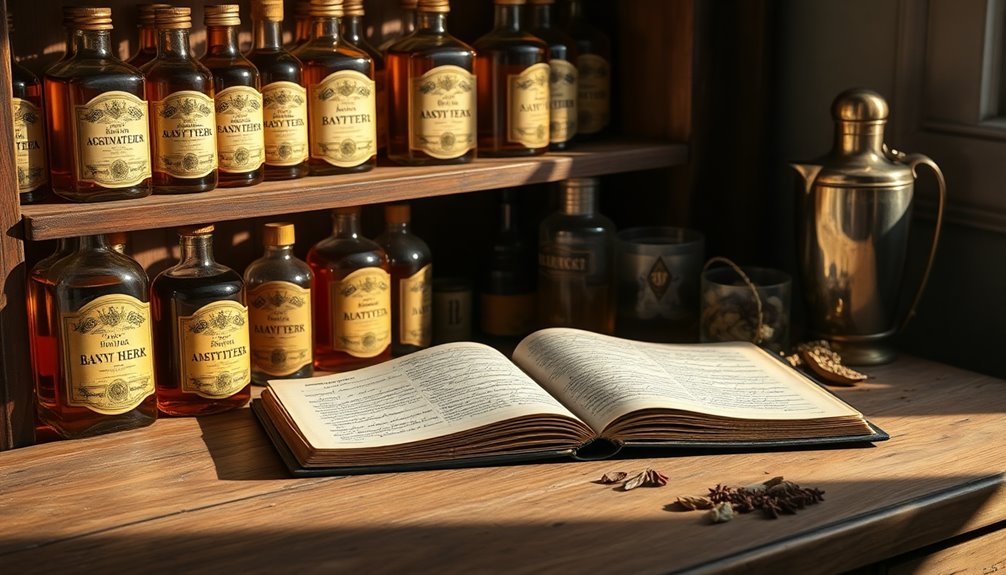
Aromatic bitters have a rich history that starts in the early 1800s when they served as medicinal remedies for ailments like malaria.
As cocktail culture blossomed by the mid-19th century, these bitters evolved from herbal treatments into key ingredients for mixing drinks.
Understanding this transformation reveals how bitters became essential in defining the modern cocktail experience.
Early Medicinal Uses
While many now enjoy bitters for their unique flavors in cocktails, these concoctions originally emerged in the early 1800s as potent medicinal remedies. Bitters were first developed by pharmacists and doctors seeking effective herbal treatments for ailments like malaria and digestive issues. They typically used ingredients like gentian, believed to aid digestion and overall health.
| Year | Product |
|---|---|
| 1824 | Angostura Bitters |
| 1800s | Herbal Remedies |
| 19th Century | Shift to Cocktails |
Initially considered tonics, bitters had high alcohol content thought to enhance their medicinal properties. As tastes evolved, the focus shifted from health benefits to enhancing cocktail flavors, leaving their medicinal roots largely forgotten.
Evolution to Cocktails
As cocktail culture began to flourish in the early 19th century, bitters evolved from their origins as medicinal tonics to essential components in mixed drinks.
The first recorded use of aromatic bitters in cocktails dates back to 1806, marking a significant turning point. As the popularity of cocktails surged, these bitters transformed from herbal remedies to key ingredients in classics like the Old Fashioned and Manhattan.
Johann Gottlieb Benjamin Siegert, a German surgeon, established a distillery for his Angostura bitters in 1830, solidifying this connection.
Bitters in Mixology History
Bitters have played a pivotal role in shaping mixology throughout history, serving as more than just flavor enhancers. The first recorded use of bitters in cocktails dates back to 1806, marking a turning point for the cocktail format.
Initially, aromatic bitters emerged in the early 1800s for medicinal purposes but quickly became essential to bartenders. Johann Gottlieb Benjamin Siegert developed Angostura bitters in the 1820s, which became a staple in classic recipes like the Old Fashioned Bitter.
As cocktail culture thrived in the late 19th century, bitters added complexity to drinks like the Manhattan.
Today, the bitters renaissance has sparked renewed interest in artisanal varieties, further enriching the mixology landscape and your cocktail experience.
Usage in Cocktails
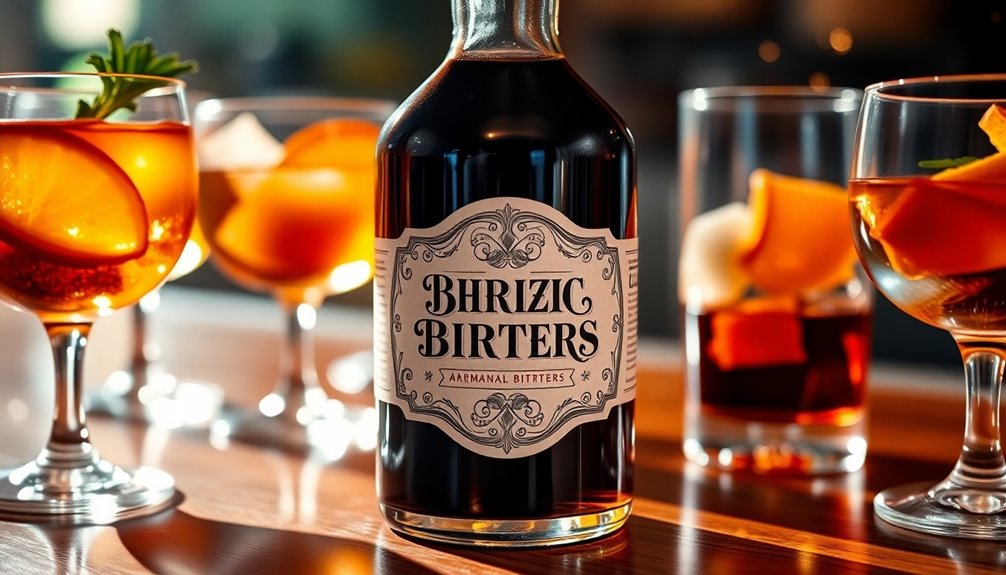
When you want to elevate your cocktails, aromatic bitters are an essential ingredient that adds depth and complexity. Typically used in small amounts—about 4 to 6 dashes—they enhance the flavor profile without overwhelming your drink.
You'll find aromatic bitters are vital in classic cocktails like Old Fashioneds, Manhattans, and Sazeracs, where their unique flavors of baking spices and herbs beautifully complement darker spirits such as whiskey, rum, and brandy.
Don't limit their use to just cocktails; you can also add them to non-alcoholic beverages like soda water for a reviving twist.
With their indefinite shelf life, aromatic bitters are a versatile and long-lasting addition to your home bar, ensuring you're always ready to craft an impressive drink.
Storage and Shelf Life
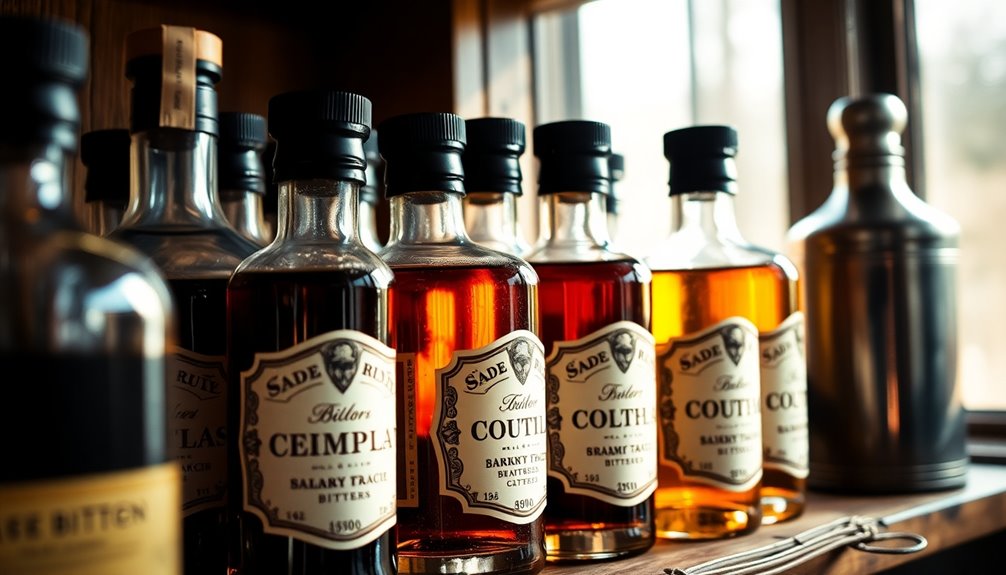
When it comes to storage, you'll be glad to know that aromatic bitters have an infinite shelf life.
While their flavor may evolve over time, they remain a valuable addition to your bar.
Just keep them in a cool, dark place to guarantee their qualities stay intact.
Infinite Shelf Life
Aromatic bitters offer an impressive advantage with their indefinite shelf life, thanks to their high alcohol content that preserves their integrity. While the taste of bitters may evolve over time, they remain usable indefinitely and don't spoil. Storing bitters in a cool, dark place helps maintain their flavor quality.
| Storage Tips | Benefits |
|---|---|
| Keep away from light | Long-lasting use |
| Store in a cool area | No expiration concerns |
| Seal tightly | Perfect for cocktails |
A single bottle of aromatic bitters can be a valuable addition to your home bar. Their infinite shelf life aligns them with many spirits, allowing for flexibility in usage without worrying about spoilage.
Evolving Flavor Profile
While aromatic bitters can last indefinitely, their flavor profile isn't static. Over time, you might notice subtle changes in taste as the bitters evolve.
Though they remain usable for years, storing them in a cool, dark place is essential to maintain their integrity. For the best flavor experience, aim to use your aromatic bitters within a few years.
It's smart to regularly check their color and aroma; any significant alterations may signal deterioration, although they may still be safe to use.
Embrace the evolving flavor profile of your bitters, and experiment with cocktails to discover how those nuanced changes can enhance your drinks.
With proper care, your aromatic bitters will continue to elevate your home bar for years to come.
Flavor Profile
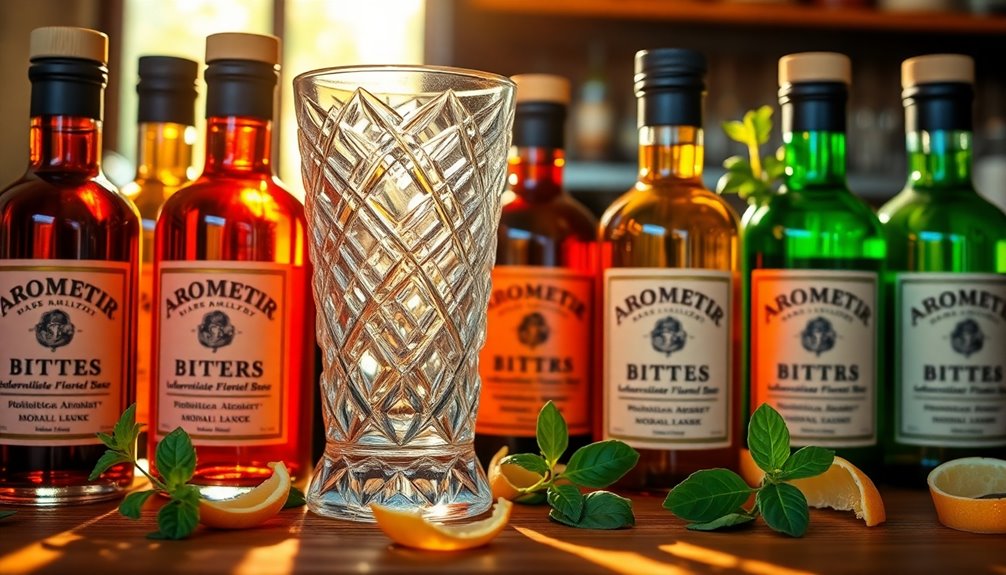
The flavor profile of aromatic bitters captivates with its complex layers, combining rich, earthy notes from spices like cinnamon and nutmeg with hints of dried cherries.
This depth comes from a careful blend of herbs and spices, creating a warming sensation that enhances your cocktail experience. The intensity of these flavors is essential, as it balances the sweet and sour elements in drinks, elevating the overall taste.
When you use aromatic bitters in classic cocktails like Old Fashioneds and Manhattans, you're not just adding bitterness; you're crafting a well-rounded flavor profile that delights the palate.
The inclusion of organic ingredients like gentian root and wild cherry bark further enriches this unique taste, making every sip a flavorful journey.
Medicinal Properties
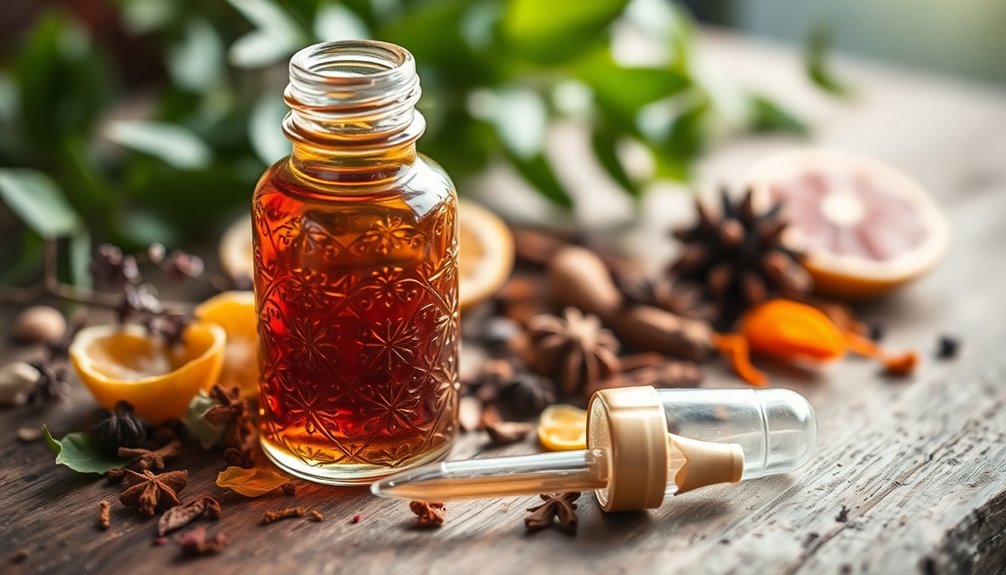
Beyond their role in enhancing cocktails, aromatic bitters carry a rich history of medicinal use that dates back to the early 1800s. You might be surprised to learn that these bitters are believed to possess restorative properties, especially for digestive issues.
Gentian, a key ingredient, is thought to aid digestion effectively. Historically, people used aromatic bitters as herbal remedies for ailments like malaria and various digestive complaints.
The alcohol content, around 44.7% ABV, acts as a solvent, extracting flavors and medicinal qualities from the herbs and spices. While modern use leans toward cocktails, the medicinal properties of aromatic bitters still hold significance for many, providing a connection to their healing roots.
Just be sure to choose bitters made from safe, organic ingredients.
Crafting Quality Bitters
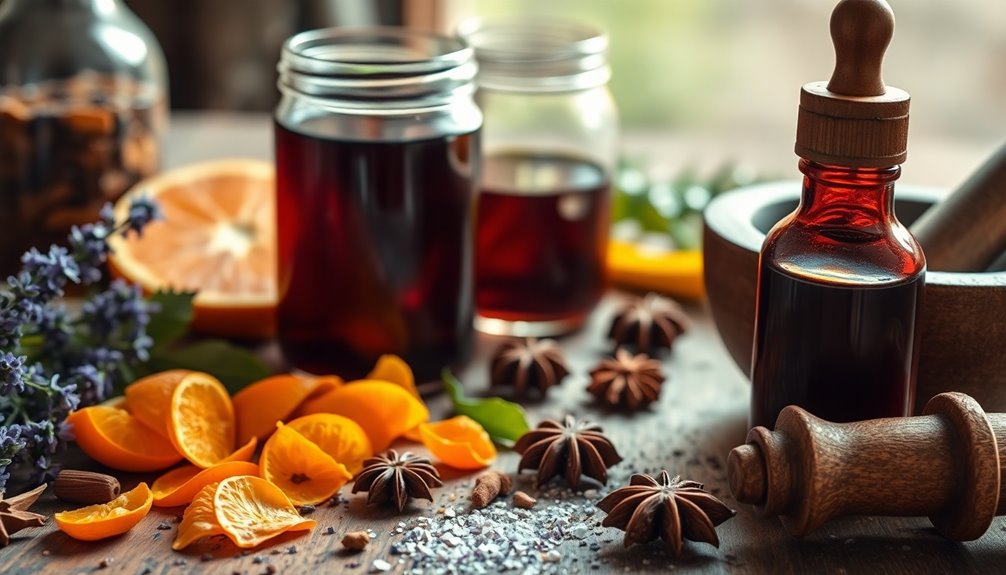
Crafting quality bitters starts with selecting raw, organic botanicals that bring authentic flavor profiles to life.
These highly concentrated aromatic bitters are handcrafted, ensuring that you avoid commercial extracts and unnecessary additives. You'll appreciate that they contain no added sugars, colors, preservatives, or GMOs, making them a natural choice for your cocktails.
The careful crafting process enhances the overall cocktail experience, providing rich, complex flavors that balance sweet and sour elements perfectly. You might find flavors like cinnamon, nutmeg, and dried fruits in your bitters, adding depth to various beverages.
Plus, with a 0.0% alcohol content, these aromatic bitters are suitable for everyone, including those who prefer to avoid alcohol altogether. Enjoy elevating your drinks!
Choosing the Right Bitters
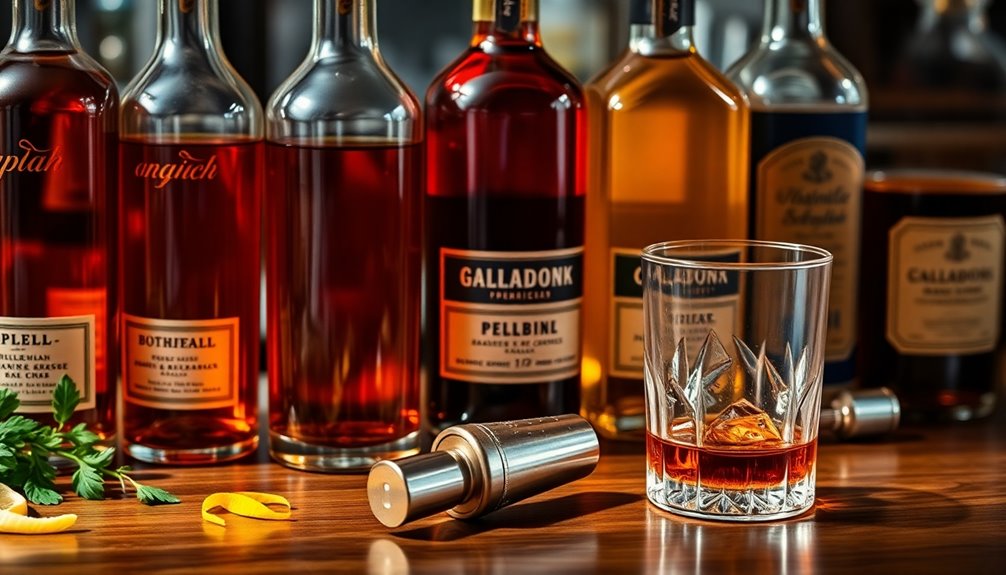
How do you choose the right bitters for your cocktails? It's all about the flavor profile you want to achieve. Here are four tips to guide your selection:
- Consider the cocktail: Use aromatic bitters for classics like Old Fashioneds or Manhattans.
- Explore flavor depth: Aromatic bitters offer rich, spiced notes, while orange bitters add invigorating citrus.
- Experiment with brands: Try different brands like Angostura or Peychaud's to find your favorite.
- Trust your taste: Personal preference is key; select bitters that complement your chosen spirits and mixers.
Frequently Asked Questions
What Does Aromatic Bitters Do to a Drink?
Aromatic bitters elevate your drink by adding depth and complexity.
When you use just a few dashes, you balance sweet and sour elements, enhancing the overall flavor profile. They act like a seasoning, much like salt in food, transforming simple cocktails into something remarkable.
You'll notice how they provide a bitter backbone that complements the sweetness of spirits, making classic cocktails like Old Fashioneds and Manhattans truly unforgettable.
What Is a Substitute for Aromatic Bitters?
Imagine a painter missing their favorite color; you can still create a masterpiece!
If you need a substitute for aromatic bitters, try using orange bitters for a citrusy twist. A blend of Angostura bitters with simple syrup can mimic the desired sweetness.
In a pinch, herbal liqueurs like Fernet offer a unique flavor. You can even craft homemade bitters with spices or mix spices and vinegar for a non-alcoholic option.
What Is the Purpose of Bitters?
Bitters serve to enhance the flavors of your cocktails, adding depth and complexity that balances sweetness and acidity.
When you add just a few dashes, you elevate the overall taste without drastically changing the drink's foundation.
Think of bitters like seasoning for your cocktails; they bring out the best in the ingredients.
What Type of Alcohol Is Bitters?
Bitters typically contain high-proof alcohol, often ranging from 35% to 45% ABV. This alcohol acts as a solvent, extracting flavors from various herbs, spices, and botanicals.
You'll find that even though bitters have a high alcohol content, you only use a few dashes in cocktails, so their impact on overall alcohol volume is minimal.
Some brands may market their bitters as non-alcoholic, but they still contain alcohol due to their concentrated nature.
Conclusion
In exploring aromatic bitters, you've discovered their unique flavors, rich history, and versatile uses. You've learned how to choose the right bitters for your cocktails, how to store them for longevity, and even their surprising medicinal benefits. Whether you're crafting a classic cocktail, enhancing a dish, or simply enjoying their complexity, aromatic bitters can elevate your experience. So, embrace their charm, savor their depth, and enjoy the art of bitters in your culinary adventures!

